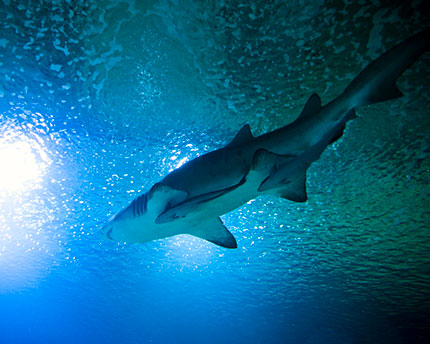Quatre Carreres
Quatre Carreres, to the south of the Eixample and with an area of 11,326 km2, is one of Valencia’s largest districts, and comprises seven neighbourhoods: Mont-Olivet, En Corts, Malilla, Fonteta de Sant Lluís, Na Rovella, La Punta and the Ciutat de les Arts i les Ciències [City of Arts and Sciences]. Historically, this was an area devoted to agriculture until the nineteenth century, occupied by nothing more than farmsteads, shanties and scattered hamlets, Even today, some of the territory is still farmland which explains the low density of population—a total of around 74,000 people. The area’s name—Quatre Carreres—derives from the four roads that led from Ruzafa and crossed the territory southwards and eastwards. Quatre Carreres formed part of the independent town of Ruzafa for a good part of the nineteenth century until, in 1877, each of its areas were permanently annexed to Valencia. Since then, Quatre Carreres has never stopped changing: in addition to major logistical infrastructures such as the goods station in Fonteta de Sant Lluís, Mercavalencia and the Saler dual carriageway (CV-500), there has been a massive urbanisation scheme since the 1970s to provide affordable housing. But modernisation of this district has really taken off during the past few years, with the launching of projects that reflect today’s forward-looking society. These include the new Hospital de La Fe, the El Saler shopping centre, and the district’s great tourist attraction, Europe’s largest cultural and scientific complex, the Ciutat de les Arts i les Ciències.
Designed by the architect Santiago Calatrava, this magnificent group of naturally inspired and organically shaped buildings include such unmissable attractions such as the entertaining Museu de les Ciències Príncep Felip, a centre built in the shape of a whale’s skeleton, in which visitors learn by hands-on interaction with the exhibits. Other attractions not to be missed are L’Oceanogràfic, which immerses us in the marine life of all five continents; L’Hemisfèric, a planetarium and IMAX projection cinema; and the splendid Palau de les Arts, the home of opera and theatre. Of more recent construction is El Ágora, a multi-functional space which will, from 2020 onwards, host the Valencia CaixaForum.
Another point of interest (also near the Túria, but this time in the neighbourhood of Mont-Olivet) is the famous Museo Fallero de Valencia, which houses a charming collection of the ninots [papier mâché effigies] pardoned at each celebration of the Falles. Basketball enthusiasts may like to drop into the Pavelló Municipal Font de Sant Lluís where, every weekend, the Valencia Basket Club plays and holds many other sporting events.
Anyone looking for an excuse to explore the neighbourhoods of Quatre Carreres could always undertake a tour of its churches. Beginning with the Església de la Mare de Déu de Mont-Olivet, built on the site of a fifteenth-century hermitage, we can then move onto the Església de Sant Lluís Bertran in Fonteta de Sant Lluís, and finish at the Església de la Puríssima Concepció in La Punta, which stands in the far south of Quatre Carreres where the traditional agricultural way of life has still not completely died out. While wandering around the district, you may get to hear from one of the residents the stories behind the names of some of the neighbourhoods: both Fonteta de Sant Lluís and En Corts for instance owe their names to fountains which, back in the fifteenth and sixteenth centuries, were reputed to possess healing powers. Malilla, on the other hand, got its name from a Muslim farmstead that was once here.
Nearby plans
Related plans

Ciutat de les Arts i les Ciències, a fascinating educational complex
This cutting-edge city with avant-garde architecture proves that learning about science, art, technology and nature can be deeply rewarding.

Oceanogràfic: Discover Europe’s biggest aquarium in Valencia
This impressive science and leisure centre offers you the chance to travel through the world’s different marine ecosystems from the comfort of Valencia.

Jardí del Túria, Spain’s largest urban park
Diverting the course of the River Túria to the south of Valencia created a huge area of empty land that has become the city’s green lung.


